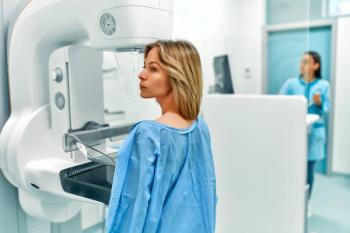
Patients with diabetes need more than glucose monitoring systems
The devices can be very useful, but patients also need support and many aren’t getting it. Arti Masturzo of CCS talks about the need for education for patients and providers.
More patients are utilizing continuous glucose monitoring systems to manage diabetes, but Arti Masturzo says patients need more than technology.
Masturzo, the chief medical officer at CCS, a chronic care management company, says patients need support and guidance. Too often, they aren’t getting the support they need, she says.
In an interview with Chief Healthcare Executive®, Masturzo shares her insights on helping patients use glucose monitoring systems as a tool to better outcomes. She offers her perspectives on how health systems and providers can utilize the technology, and remote patient monitoring, to offer better care to patients.
Masturzo also discusses the need for educating patients, more training for providers, and the extra steps required to use remote monitoring technology successfully with patients from underserved communities. (Note: We submitted questions and answers via email.)
Q: Patients can get prescription-based medical devices, including glucose monitoring systems, very easily. What kind of support do patients need to go with the technology?
A: “The
“Unfortunately,
“Managing diabetes can be a challenging journey, especially since many patients prescribed CGMs today are more often than not medically complex and living with multiple comorbidities. It takes a lot of motivation to stay on track.
“There are a variety of approaches when it comes to personalizing patient care. Some people need hard facts and figures to stay motivated, while others thrive on emotional support and encouragement. For those just starting, building a foundation of health competencies and overcoming any socioeconomic barriers holding them back are essential.
“CGMs coupled with personalized education and coaching provided by chronic care management leaders like CCS can make a real difference in the lives of people with diabetes. Focusing on individual goals and small changes that add up over time, this approach can simplify diabetes care and help people achieve better health outcomes.”
Q: How do providers make sure patients are using CGMs properly?
A: Primary care providers do much of the heavy lifting in diabetes management, especially for patients with less complex cases. To improve patient outcomes, PCPs would be well-served to prioritize referral relationships with endocrinologists. Endocrinologists and their staff often have the expertise to help ensure patients living with diabetes receive the support they need to manage their chronic condition consistently.
“However, all healthcare providers face significant challenges, many feeling overwhelmed and burned out as the demand to do more with less and fewer resources continues. In response, some providers and health plans outsource coordinated chronic care management support. With a focus on patient education and coaching, these organizations can provide valuable nutrition, exercise, and mental health guidance. Among many other benefits, this guidance can ensure patients are adopting and using CGMs correctly.”
Q: How do you get patients to adhere to these devices? Do patients commonly fall off in usage after a certain amount of time?
A: “Individuals managing diabetes do not have a day off. They must be vigilant about their health daily. That’s why CCS has prioritized providing patients with human support that focuses on education and coaching to help them maintain their care plan. By providing proper education, coaching, and assistance, patients with diabetes can lead healthy and fulfilling lives.
“It’s common for people to stop using a CGM because they do not know how to use or troubleshoot the device. In addition, cost can also be a factor that prevents people from continuing therapy..
“Some patients are better candidates for CGMs than others — and that’s where risk stratification can play a critical role. While CGM adherence patterns are highly individualized, some studies show a specific
Q: Are there patients that are better suited for CGMs and other devices used in remote patient monitoring? How do providers assess if patients aren’t suited for it?
A: “Research has shown the
“There are some patients with type 2 diabetes who are well-educated and experienced. “For example, I actually have a family member that maintains an A1C in the normal range. That individual understood many years ago what foods they can and cannot eat by using a blood glucose meter (BGM). A CGM for this type of person is unlikely to provide a cost-effective benefit.
“At the end of the day, we want all patients to receive the right therapy, at the right time, and for the right reason. Our job is to help providers identify the patients who will benefit from the therapy and then holistically support them so they get the desired outcomes.”
Q: Do providers need to give extra guidance for patients from under-served communities, who may have less engagement with doctors?
A: “Absolutely. People in underserved communities have more SDOH barriers. We saw this in our own patient data. For example, 33% of CCS customers report feelings of loneliness. Loneliness leads to depression and low motivation, making them less likely to stay on therapy. Further, 25% said they find eating healthy foods problematic due to cost. Diet and nutrition is a cornerstone of diabetes management. Unfortunately, this corroborates what we see in the literature on the social determinants of health.
“As I mentioned, the tricky part is that we can only ask so much from clinicians already strapped for quality patient time. At CCS, we’re focusing on helping patients in underserved communities who face SDOH challenges. We’re revamping our business model to provide holistic, person-centered care considering an individual’s complete profile and life.
Q: Do the providers themselves need training to help ensure patients use CGM devices? Is clinician buy-in an issue?
A: “Yes, clinicians definitely need ongoing education to help ensure patients use CGM devices accurately. In fact, the
“Unfortunately, many providers today don’t get dedicated opportunities to learn about diabetes care in medical or nursing school, and their tight schedules seeing back-to-back patients make it even more difficult to proactively stay on top of the treatment, device, and drug developments.
“Lack of familiarity with emerging treatments or innovative new devices and/or prescriptions may also mean providers are less likely to recommend these therapies to their patients. This, in turn, could exacerbate inequities, raise nonadherence rates, and lead to suboptimal health outcomes. Ultimately, clinicians need to be knowledgeable and confident in order to prescribe the right treatment, at the right time, and for the right reason. That’s why our team dedicates time each month to in-person and virtual meetings to help educate clinicians and coach their patients on appropriate CGM utilization and overall diabetes care best practices.”


















































